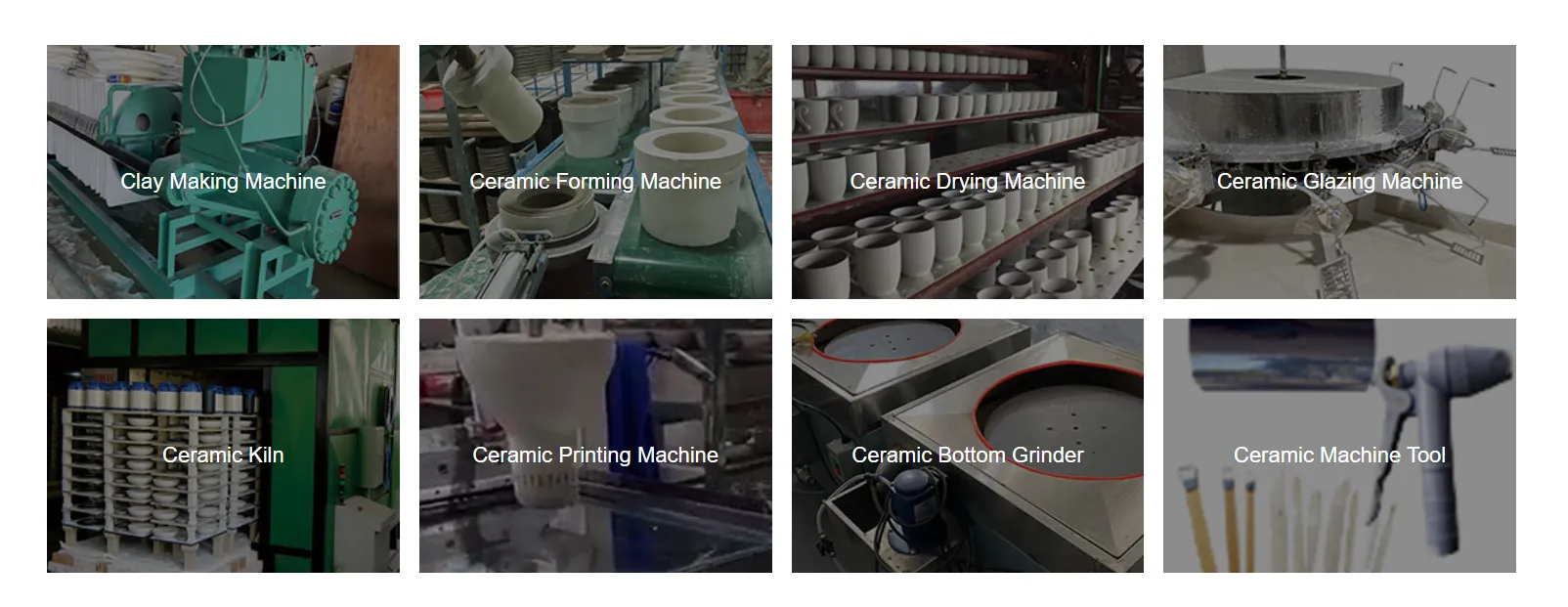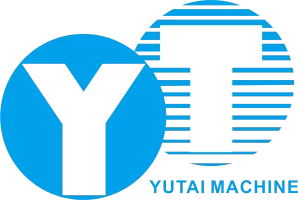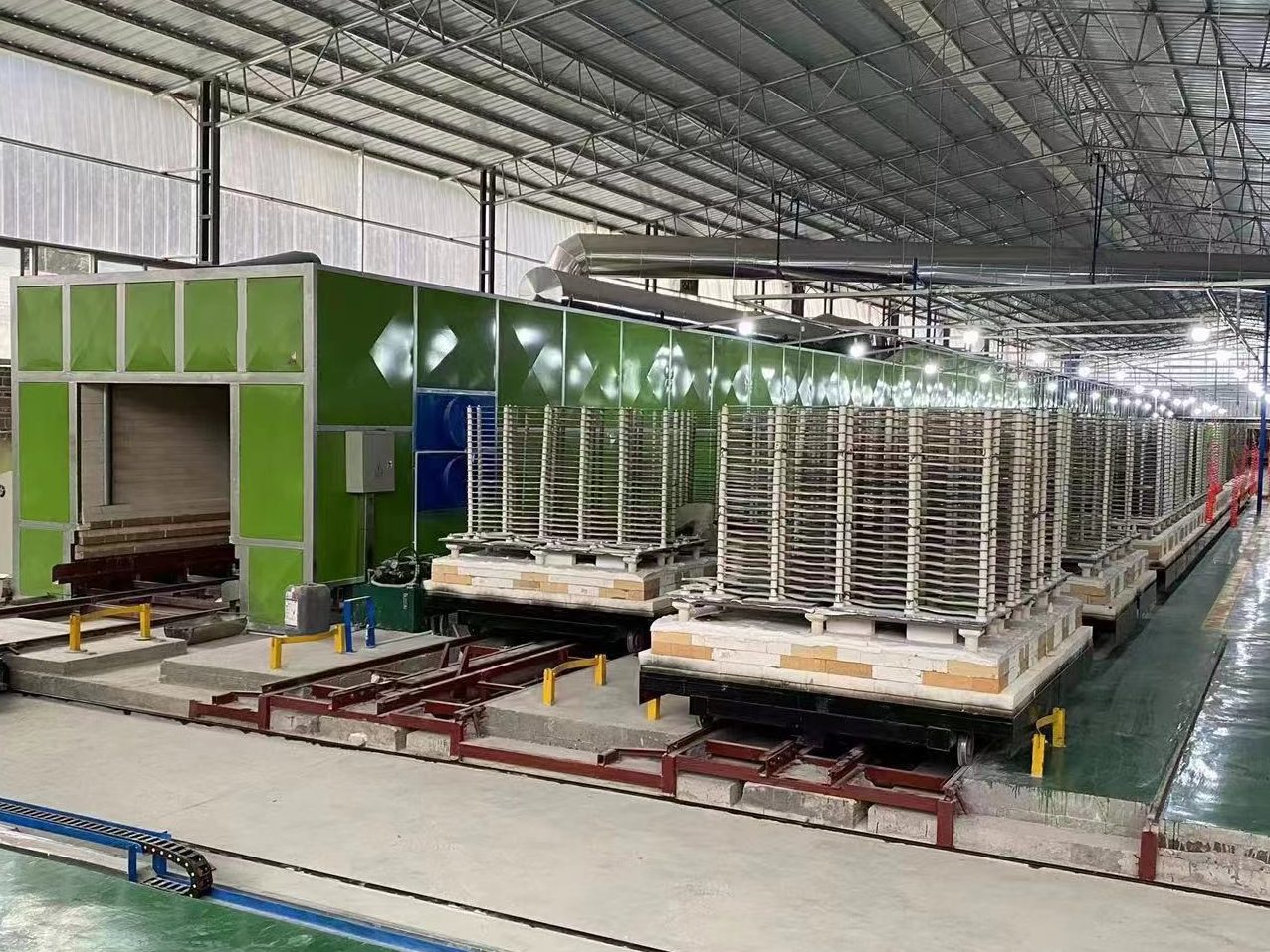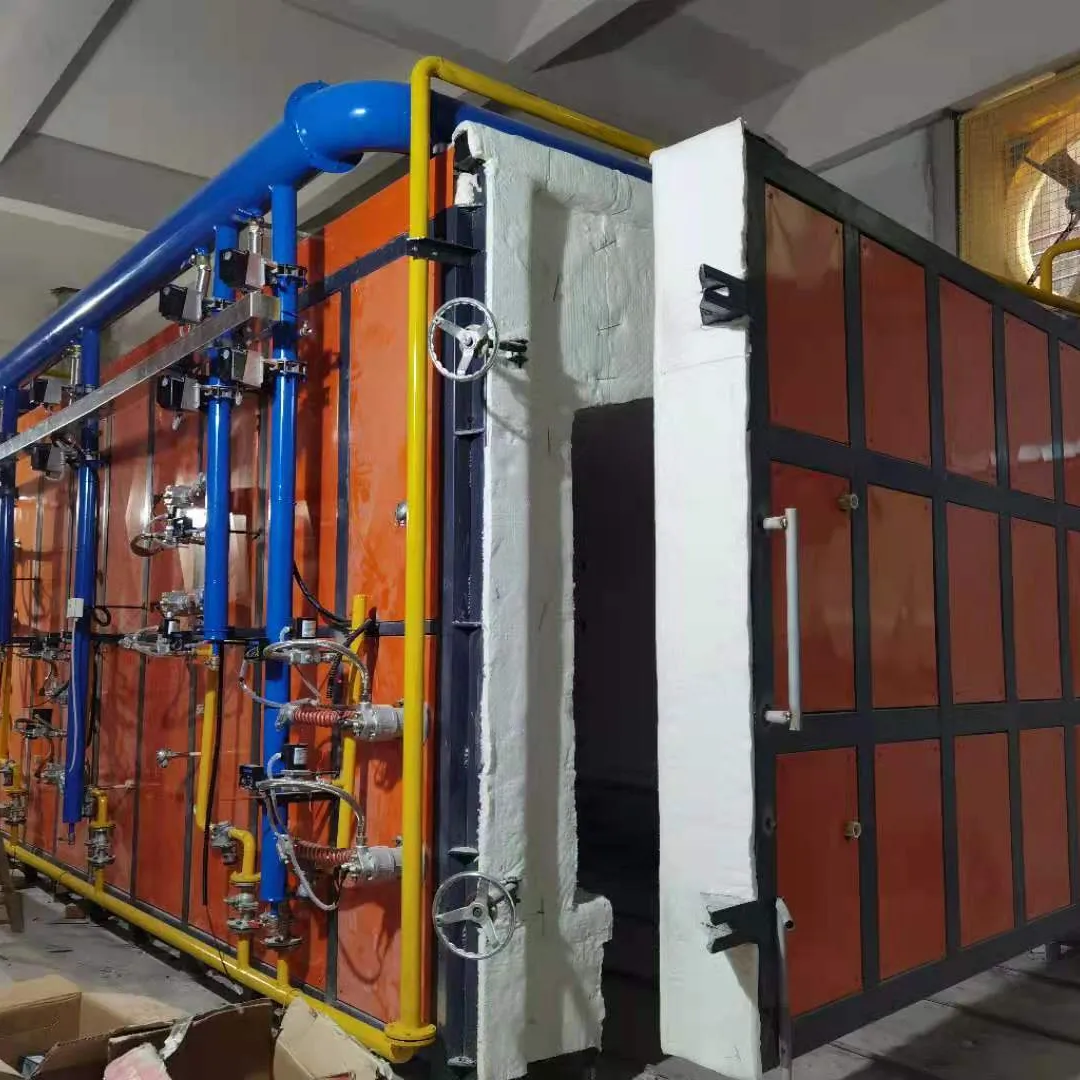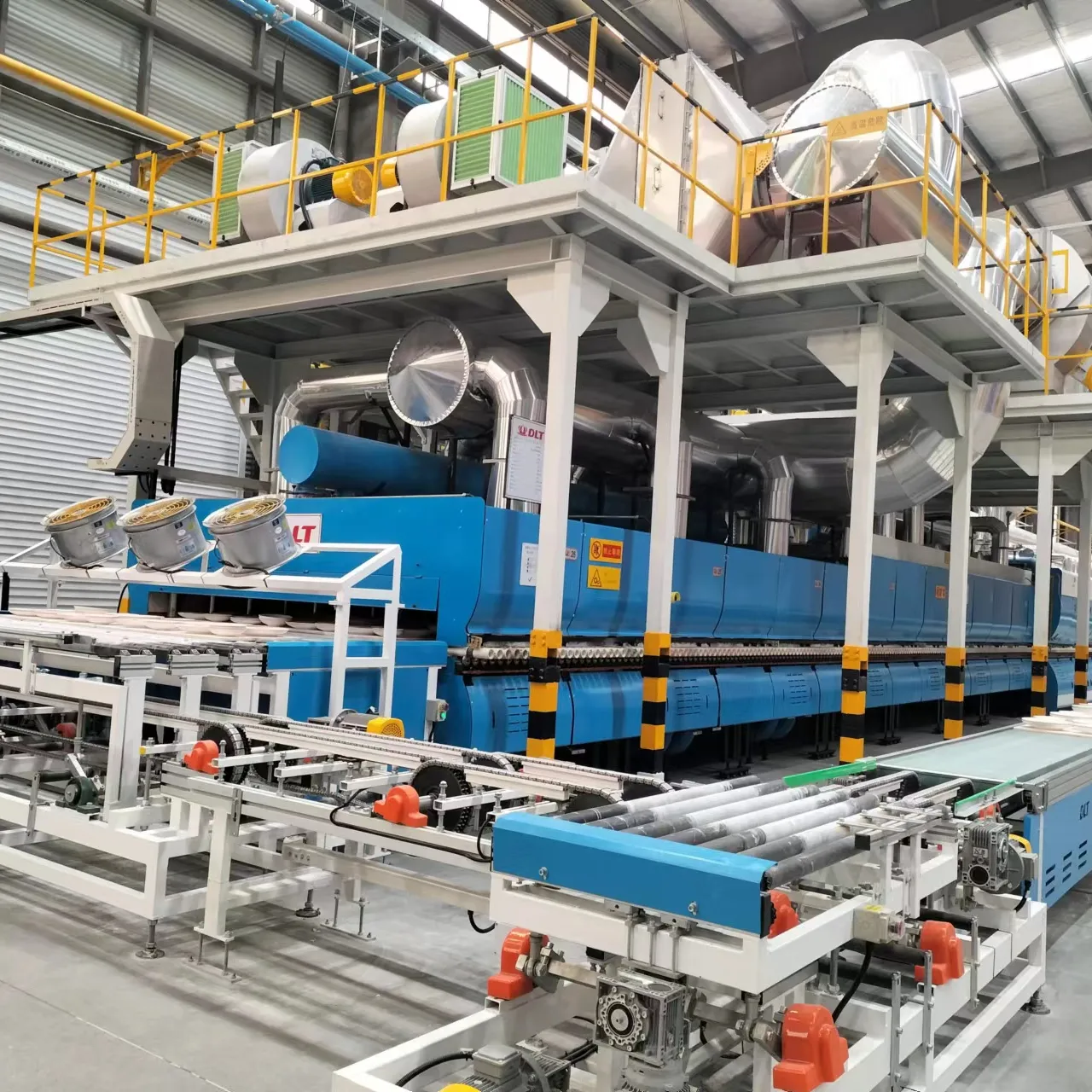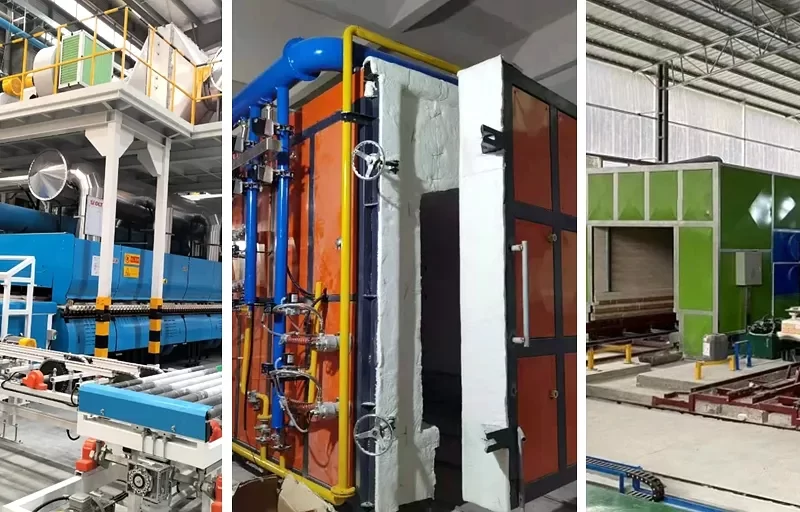
킬른 는 세라믹 제조 공정에서 없어서는 안 될 중요한 장비입니다. 가마의 성능과 선택은 세라믹 제품의 품질 및 생산 효율과 직접적인 관련이 있습니다. 세라믹 산업의 발전과 함께 다음과 같은 다양한 유형의 가마가 시장에 등장했습니다. 터널 가마, 셔틀 가마, 롤러 가마등 가마마다 고유한 특성과 적용 범위가 다르므로 세라믹 제조업체는 적합한 가마를 선택하는 것이 중요합니다.
다양한 종류의 가마
터널 가마: 터널 가마는 긴 터널 구조의 연속식 가마입니다. 소성 온도가 균일하고 소성 주기가 짧아 대량 연속 생산에 적합한 것이 특징입니다. 터널 가마는 세라믹 타일, 바닥 타일 등 평평한 세라믹 제품 생산에 적합합니다.
셔틀 킬른: 셔틀 킬른은 열차 칸과 유사한 구조로 왕복 운동을 할 수 있는 간헐적 킬른입니다. 셔틀 킬른은 높은 온도 제어 정확도와 높은 열 효율의 특성을 가지고 있습니다. 예술 도자기와 같이 높은 정밀도가 요구되는 세라믹 제품을 소량 생산하는 데 적합합니다.
롤러 킬른: 롤러 킬른은 롤러를 컨베이어 벨트로 사용하고 제품이 롤러를 통과하여 소성합니다. 롤러 킬른은 빠른 소성 속도, 높은 생산 효율 및 균일 한 가열의 장점이 있습니다. 세라믹 타일, 도자기 접시 등과 같이 크고 무겁거나 얇은 세라믹 제품의 생산에 특히 적합합니다.
다양한 가마의 장점과 단점
터널 가마
이점:
- 대규모 생산 규모: 터널 가마는 일반적으로 대규모 생산에 적합하며 세라믹, 유리, 시멘트 및 기타 제품과 같은 많은 품목을 생산하여 대량 생산의 요구를 충족시킬 수 있습니다.
- 높은 발화 효율: 터널 가마는 연속 생산을 달성 할 수 있고 소성 효율이 높으며 필요한 제품을 지속적이고 안정적으로 제공 할 수 있습니다.
- 높은 온도 제어 정확도: 터널 가마의 가마 온도 제어 정확도는 일반적으로 높으며 ±5°C 이내로 제어할 수 있어 제품 품질의 안정성을 보장하는 데 유리합니다.
- 가마 내 균일한 온도 분포: 터널 가마의 설계 및 가열 방식으로 인해 가마 내 온도 분포가 균일하여 소성 과정에서 제품이 고르게 가열되고 불량률을 줄일 수 있습니다.
- 우수한 제품 품질: 터널 가마의 온도 분포가 균일하고 안정적이기 때문에 제품 품질이 양호하고 제품의 색상, 부드러움 및 기타 외관 품질을 보장 할 수 있습니다.
- 낮은 에너지 소비: 터널 가마의 열이 재료에 집중되기 때문에 빠르게 가열되고 냉각되어 전기를 절약하고 에너지 소비를 줄일 수 있습니다.
단점:
- 높은 투자 비용: 터널 가마의 건설 및 운영 비용은 상대적으로 높기 때문에 소규모 제조업체에서는 감당하기 어려울 수 있습니다.
- 환경의 영향을 쉽게 받음: 터널 가마의 가동은 강우, 태풍 등 가마 가동에 영향을 줄 수 있는 날씨와 같은 환경적 요인에 쉽게 영향을 받습니다.
- 환경 문제: 전통적인 터널 가마는 난방을 위해 석유와 석탄과 같은 화석 연료를 사용합니다. 이때 발생하는 연도 가스에는 이산화탄소, 이산화황 등 다량의 유해 가스가 포함되어 있어 환경을 심각하게 오염시킵니다. 그러나 환경 보호 정책이 강화됨에 따라 첨단 연도 가스 처리 기술을 사용하면 환경 오염을 줄일 수 있습니다.
셔틀 킬른
이점:
- 뛰어난 운영 유연성: 셔틀 킬른은 일반적인 다운 플레임 킬른의 유연성을 갖추고 있으며 다양한 종류의 생산 요구를 충족시킬 수 있습니다.
- 근무 환경 개선: 가마의 적재 및 하역과 제품의 부분 냉각을 가마 외부에서 수행 할 수있어 작업 조건이 향상됩니다.
- 처리 시간 단축: 가마 외부에서 작업하면 가마의 처리 시간을 단축하고 생산 효율성을 향상시킬 수 있습니다.
단점:
- 높은 열 소비: 가마는 간헐적으로 소성하기 때문에 축열 및 방열 손실이 크고 연도 가스 온도가 높아 열 소비가 높습니다. 하지만 새로운 에너지 절감형 셔틀가마는 가마 본체의 조적 구조를 개선하고 배기가스 폐열 활용 장치를 추가해 이러한 단점을 크게 개선했습니다.
- 상대적으로 낮은 자동화: 연속 가마에 비해 셔틀 가마는 자동화가 덜 되어 있고 수동 작업이 더 많이 필요할 수 있습니다.
- 가마를 선택할 때는 제품 유형, 생산 규모, 생산 주기, 비용 예산 등의 요소를 종합적으로 고려하여 선택한 가마가 생산 요구를 충족하고 생산 효율과 제품 품질을 극대화할 수 있는지 확인해야 합니다.
롤러 킬른
이점:
- 균일한 온도: 롤러 가마는 상부 롤러와 하부 롤러를 동시에 가열하여 가마의 온도를 균일하게 유지하고 블랭크를 더 고르게 가열 할 수 있습니다.
- 내화 재료 필요 없음: 롤러 킬른은 작동 중에 킬른 카 및 새거와 같은 내화물을 사용할 필요가 없으므로 비용이 절감됩니다.
- 짧은 생산 주기: 제품의 소성 주기가 비교적 짧아 생산 효율이 향상됩니다.
- 낮은 연료 소비: 가마의 온도가 균일하고 가열 효율이 높기 때문에 롤러 가마의 연료 소비가 상대적으로 낮습니다.
단점:
- 하중 지지 및 너비 제한: 가마 폭과 하중 지지력은 롤러의 고온 성능에 의해 제한되므로 크거나 무거운 제품을 소성하는 데 적합하지 않을 수 있습니다.
- 막힘 처리의 어려움: 가마에서 막힌 후에는 제품을 다루기가 어렵습니다.
- 스크래치 문제: 롤러 킬른의 설계는 지속적으로 개선되고 있지만 스크래핑 문제는 아직 완전히 해결되지 않았습니다.
공장을 위한 킬른 선택 방법
적합한 가마를 선택하려면 제품 유형, 생산 규모, 생산 주기, 비용 예산 등 여러 가지 요소를 고려해야 합니다. 다음은 고려해야 할 몇 가지 제안 사항입니다:
- 생산 규모
대규모 생산의 경우 생산 효율성을 높이고 비용을 절감하기 위해 터널 가마 또는 롤러 가마를 선택해야 합니다.
소규모 다품종 생산은 셔틀 가마를 선택하여 유연한 생산 요구 사항을 충족할 수 있습니다. - 제품 유형
세라믹 타일 및 바닥 타일 생산은 터널 가마 또는 롤러 가마에 적합합니다.
예술 도자기, 실험실 도자기 등은 셔틀 가마에 적합합니다. - 에너지 효율성
가마의 에너지 소비량을 고려하여 에너지 절약형 가마를 선택하면 생산 비용을 절감할 수 있습니다. - 자동화 수준
고도로 자동화된 가마는 생산 효율성을 크게 개선하고 인건비를 절감할 수 있습니다.
공장의 실제 요구 사항에 따라 적절한 자동화 수준을 선택하세요. - 유지 관리 및 수리
구조가 간단하고 유지보수가 쉬운 킬른을 선택하면 가동 중단 시간과 유지보수 비용을 줄일 수 있습니다. - 생산 주기에 주의하세요
생산 주기가 짧은 제조업체는 롤러 킬른과 같이 소성 속도가 빠른 가마를 선택할 수 있습니다. 생산 주기 요구 사항이 높지 않은 제조업체는 셔틀 가마와 같이 소성 온도가 더 안정적이고 정밀도가 높은 가마를 선택할 수 있습니다. - 합리적인 예산 비용
가마의 가격은 모델, 브랜드, 기술 등의 요인에 따라 달라집니다. 예산 범위 내에서 적합한 가마를 선택하여 수익을 보장하세요.
결론
세라믹 제조업체에게 올바른 가마를 선택하는 것은 매우 중요합니다. 가마를 선택할 때는 제품 유형, 생산 규모, 생산 주기, 비용 예산 등의 요소를 충분히 고려하여 선택한 가마가 생산 요구 사항을 충족하고 생산 효율과 제품 품질을 향상시킬 수 있는지 확인해야 합니다.
로서 세라믹 기계 제조업체, 유타이 의 생산을 전문으로 하는 세라믹 전자동 및 반자동 기계. 10년 이상 전 세계의 많은 세라믹 공장과 협력해 왔습니다. 우리는 고객에게 최고 품질의 가마 장비와 서비스를 제공하기 위해 최선을 다하고 있으며 귀하와 협력하기를 기대합니다.
